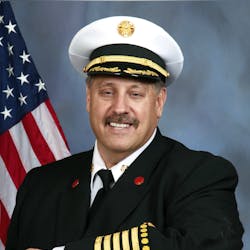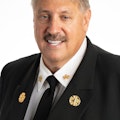When it comes to paramedics, is less really more? It seems there is a school of thought among some in the EMS community that too many paramedics is a bad thing. I’ve heard it for the last decade. I’ve seen lectures on it at conferences and read articles in publications claiming that too many paramedics results in skills degradation. These people also contend that not every call requires a paramedic, as many are BLS in nature and no ALS skills are needed.
Following their logic, maybe we should close fire stations and have fewer firefighters since the number of fires has decreased over the last 25 years. Maybe we should have fewer doctors, so you can wait six months or longer for your appointment, all because too many doctors would result in “skill degradation.” After all, not every patient who makes an appointment to see their doctor is having an emergency or needs an ALS intervention. Ironically, some of those saying that there are too many paramedics are physicians. Interesting that I have never heard them say there are too many doctors, resulting in skill degradation.
To be fair to those who advocate for fewer paramedics, some studies validate their concerns. But the same studies also confirm that practice does make perfect. One study showed that paramedic skills were better among those who just graduated from paramedic school versus those who had been on the job for several years.1 This makes sense to me since those just graduating from paramedic school have been practicing their skills in labs and clinicals.
Another study showed that longer periods between intubations lower your chances of a successful intubation.2 The study also showed that those paramedics who practiced intubation in skills labs had much higher proficiency rates of intubating. Wouldn’t this also be true for physicians and anesthesiologists?
The answer to those calling for fewer paramedics is not to decrease the number of paramedics but to create training and skill labs to keep paramedic skills sharp. Paramedics who continually train and practice their skills can stay sharp and ready, regardless of the number of times they intubate, start IVs or do other procedures in the field. This is especially important for paramedics in low-volume areas.
There is a reason why professional baseball players show up hours before the game to take fielding and batting practice. There is a reason why law enforcement officers are required to go the range and qualify on their weapons a minimum of three hours a year to maintain their Police Office Standards & Training (POST) certification. And there is a reason firefighters practice multiple evolutions in fire training. As classical pianist and composer Vladimir Horowitz said, “The difference between ordinary and extraordinary is practice.”
But there are other reasons for having multiple paramedics on the scene. One is NFPA 1710: Standard for the Organization and Deployment of Fire Suppression Operations, Emergency Medical Operations, and Special Operations to the Public by Career Fire Departments, which states that personnel dispatched to an ALS emergency should include a minimum of two people trained at the EMT-P level and two people trained at the EMT level, all arriving within eight minutes or less, 90 percent of the time. The two paramedics need not arrive on the same unit or respond from the same department.
Further, we all know that it is always nice to have multiple paramedics on the scene of a critical patient. Sometimes, multiple ALS skills need to be accomplished at the same time. Other times, one paramedic may not be able to complete a skill and may have to rely on another paramedic. This is true especially during difficult intubations. This “safety net of paramedics” always works to the patient’s advantage.
To maintain skill levels among paramedics, you can develop quarterly skill drills or use a quality improvement process to determine what skills paramedics have not done recently or where they are showing deterioration, and get them into a skills lab until they demonstrate proficiency.
So, before we throw the baby out with the bath water and get rid of paramedics because we think too many could create problems, let’s start doing what other professions do and train to maintain skills and proficiencies.
References
1. Vrotsos, KM, Pirrallo, RG, Guse, CE, et al. “Does the n umber of system paramedics affect clinical benchmark thresholds?” Prehospital Emergency Care. 2018.
2. Garza, AG, Gratton, MC, Coontz, D, et al. “Effect of paramedic experience on orotracheal intubation success rates.” Journal of Emergency Medicine. 2003.
About the Author
Gary Ludwig
GARY LUDWIG has served in three fire departments over his career: St. Louis, Memphis, and Champaign, IL. His fire, EMS and rescue career spanned a total of 46 years, and he has been a paramedic for over 44 years. Ludwig served as president of the International Association of Fire Chiefs in 2019-20. He has a Master’s degree in Business and Management, has written over 500 articles for professional fire and EMS publications and is the author of seven books.
Connect with Gary
Email: [email protected]
Facebook: Gary Ludwig
Twitter: @ChiefGaryLudwig
Website: garyludwig.com

